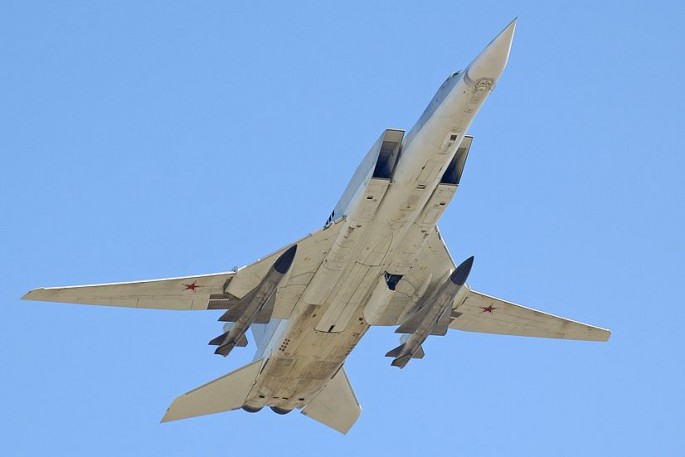The Russian Aerospace Defense Forces has ordered the new Raduga Kh-32 air-launched stand-off cruise missiles originally built to sink U.S. Navy carriers and warships to arm its Tupolev Tu-22M3 "Backfire" bomber fleet.
This long-range missile will become operational by 2018 on the supersonic Tu-22M3 with a range of 6,800 km and a speed of Mach 1.6 at altitude. The ancestor of the variable-winged Tu-22M3, the Tu-22M, was designed in the late 1960s as a long-range, anti-shipping attack bomber. The Tu-22M3 continues this tradition.
The Kh-32 (Complex 32) is also known as the X-32.
VKO reported successful operational evaluation trials of the Kh-32 a missile that uses a combination of GLONASS (the Russian satellite navigation system), GPS and radar terrain mapping to achieve high levels of accuracy.
The Kh-32, an upgraded version of the Kh-22, can be armed with either a conventional or nuclear warhead. It can deliver its 1,000 kg conventional warhead or 1,000 kiloton nuclear warhead out to 1,000 km compared to the 600 km for the Kh-22.
The Kh-32 also features an improved rocket motor and a new seeker head to increase accuracy. It can hit speeds of some 5,000 km/h.
Development of the missile continues, however, and tests have yet to be concluded, said sources at the Tactical Missiles Corporation, a major Russian weapons manufacturer and missile maker.
Sources here said the Kh-32 is designed to eliminate enemy ships and radar stations. They noted the combination of supersonic speed and a ballistic flight path makes the Kh-32 literally invulnerable to anti-aircraft systems and enemy fighters.
After launch, the Kh-32 gains claws upwards to 40 kilometers to reach the stratosphere before plunging downwards at a steep angle to smash into its target.
Russia is currently using the four-man Tu-22M3 to drop dumb bombs on enemies of Syrian President Bassar Al Assad. The bomber has been carrying out attacks since September 2015.



























